News
Cricketers who retired early because of severe injuries
Injuries are considered an inevitable element of any sport but when the game is being played with a 150-gram ball made up of solid cork and leather and being delivered at lightning speed, you should expect numerous broken jaws, fractured ribs, and wounded heads. But the fact of the matter is that more serious injuries have materialized on the field of cricket by not just pace and bounce of the ball but also by the athletic and acrobatic stunts from the cricketers who in pursuit of giving their 100 percent on the field, often end up pulling a hamstring, twisting an ankle or fracturing their knees. There have been numerous instances when these injuries have proven more than ordinary hick-ups and have ended up costing players their careers. There are quite a few players who have been victims of injuries in their careers and let us go through a few of them.
Shane Bond

The speed star from New Zealand was renowned for his lightning pace. He was being viewed upon as one of the greatest after Sir Richard Hadlee. He is the fastest bowler to have emerged from the land of New Zealand. During his peak in 2003, this man was the real attraction in the world cup along with the likes of Shoaib Akhtar and Brett Lee. He has ripped through quite a few batting orders. He represented the black caps for nine years but this doesn’t tell the complete story. During his patchy career, he could manage to play only 18 tests and 82 ODIS thanks to the fragility of his structure.
Time and again he had issues with his back. The most serious of which was in late 2003 when he had surgery and his spine was transfused with titanium wire and was out for cricket for almost two years. Apart from these serious challenges, minute niggles were also frequently occurring which hindered his career. This speed merchant hung his shoes in 2010.
Nathan Bracken

The left-arm seamer from New South Wales was tall and well built with exceptional bowling abilities. He made his debut on the Australian side in the era when they had great Mcgrath, Lee, and Warne. He had the canny ability to move the ball back into the right-handers. He was definitely a guy with a promising future. He was ranked as the number 1 ODI bowler in 2008 and also he was declared Australia’s ODI player of the year in 2009. Like many other fast bowlers, he too had his share of injuries. But it was his knee injury that really curtailed his career and despite fighting all the odds, he decided to leave the game and planned to have his knee operated on.
Muhammad Zahid

Pakistan has a history of producing great fast bowlers. Most of them have unearthed from the province of Punjab. In the ’90s this pace bowling attack reached its crescendo and in those days it was considered almost impossible to penetrate into this attack. But surprisingly this lad from Gaggu Mandi made an impact in his debut test match against New Zealand with his ferocious pace and was and picked up 11 scalps. He was a genuine fast bowler with a great heart and was viewed upon as a great prospect for Pakistan cricket.
He suffered a back injury in the early part of his career and got operated on. This kept him out of the game but when he came back in 1999, he could never make the same impact again. He could manage to play only 5 test matches and 11 one-day internationals. He last represented Pakistan back in January 2003 and unfortunately could not make a comeback after that.
Craig Kieswetter

Born and raised in South Africa, Kieswetter played for Somerset in English county. Like few other players, he preferred England over South Africa for his international career and played 46 ODI and 25 T20 internationals. He was a hard-hitting wicketkeeper-batsman who liked to play his strokes and had opened for England in T20 cricket. The highlight of his career was winning the T20 world cup in 2010 in the Caribbean where he performed brilliantly along with Kevin Pietersen to clinch the 1st ICC title for his country.
In the 2014 season of English county, Craig Kieswetter was playing for Somerset against Northamptonshire where he met a very serious injury that shattered his aspirations of an illustrious career. He received a bouncer who went through his helmet and hit him on the face. He suffered from a broken nose and fractured cheekbone. The injury was quite serious indeed but nobody expected it to be a career-threatening one. But the later proceedings clearly proved the severity of the blow and Kieswetter tried his best to fight the ailment but the things never went his after that blow. He found it impossible to sight the ball and hence had to retire from all forms of the game.
Saqlain Mushtaq

He was a wily character with a wide range of deliveries up his sleeve. Saqlain’s mixed bag contained the off-spin, topspin, arm ball and the most potent of them all was the doosra. He is someone who resurrected the art of off-spin bowling by inventing doosra. He changed the paradigm of off-spin bowling and demonstrated that off-spinners were no more going to be a run containing articles. He was the fastest to 100 and 200 ODI wickets.
He suffered from a knee injury and had surgery in left knee in early 2004. He was out of international cricket for almost half a year before that. But in March 2004, Inzamam ul Haq called Saqlain Mushtaq back into the side to play a test match against India in Multan. Even though Saqlain argued that he was not 100 percent to play the game, but Inzi insisted that he needed him in the team because of the non-availability of a genuine off-spinner. The match however didn’t turn out to be great for Saqlain because he got some serious hammering at the hands of Virender Shewag who scored 309. Saqlain ended up with dismal figures of 1-204. He was immediately dropped from the side and the worst part about that was that his injury exacerbated his right knee also underwent surgery. However, after this surgery, he could never make a comeback into the Pakistan team and that meant the end of his career.
Saba Karim

Saba Karim is one of the lesser-known commodities in international cricket. He played as a wicketkeeper for India but for not a long duration. He could never really find his place in the Indian team even after his debut in 1996. After the failures of the Indian keepers such as Nayan Mongia and Sameer Dighe, Mongia was called into the Indian team in the 2000 series against South Africa. It appeared to all of Indians that this was his chance to solidify his spot in the team but destiny had planned something else. In the 2000 Asia cup at Dhaka Karim was standing behind the stumps when he got hit on the eye on the delivery of Kumble. He underwent surgery but all this could not prevent this injury from finishing his cricket career forever and hence he never played again for India.
Phillip Hughes

This gutsy left-handed batsman from South Australia was an elegant and promising cricketer with an illustrious career ahead of him. He played a couple of seasons for New South Wales before making his international debut. His stroke playing resembled that of great Mathew Hayden and he was as effective as the two legendary openers Langer and Hayden.
His story of injury is very different from the rest of the guys mentioned here because his injury didn’t just cost him his career but his precious life.
In November 2014 at Sydney, while representing South Australia against New South Wales, He received a bouncer from Sean Abbot that hit him just below his left year. Receiving the blow, he immediately fell down and went into the state of a comma. He was immediately hospitalized and the game was abandoned.
He remained in the state of coma for two days during which he underwent surgery as well. But unfortunately, the young lad at the age of 25 was not able to survive this blow and died on 27th November 2014.
The news came out as a shock to the entire cricketing fraternity and later serious concerns were raised on the safety of players and the use of better safety wares for the players. But this incidence clearly proves the point that cricket is by no means an easy game to play especially when you are facing a steaming fast bowler.
Cricket
Harmanpreet Leads from the Front as India Women Seal 5–0 Clean Sweep Over Sri Lanka
India Women capped off a dominant tour with another composed performance, defeating Sri Lanka Women by 15 runs in the fifth and final T20I to complete a 5–0 clean sweep of the series. The result underlined India’s superiority throughout the tour, as they consistently controlled key phases of play and delivered under pressure.
Batting first, India Women posted an imposing 175 for 7 from their 20 overs. The innings was anchored by captain Harmanpreet Kaur, who led from the front with a commanding 68 off 43 balls. After early setbacks that saw Shafali Verma, Gunalan Kamalini and Harleen Deol depart inside the powerplay, India required stability — and Harmanpreet provided exactly that.

The skipper rotated the strike efficiently before accelerating with authority, striking nine boundaries and a six to maintain momentum. Support came in patches, with Amanjot Kaur contributing a useful 21, but it was the late surge that lifted India to a formidable total. Arundhati Reddy produced a stunning cameo, remaining unbeaten on 27 from just 11 deliveries, her clean striking in the death overs decisively shifting momentum in India’s favour.
Among the Sri Lankan bowlers, Kavisha Dilhari and Chamari Athapaththu were the standouts, claiming two wickets apiece, but the attack struggled to contain India in the closing stages.
Chasing 176, Sri Lanka Women responded with intent and determination. Hasini Perera starred at the top of the order with a fluent 65 off 42 balls, while Imesha Dulani compiled a composed 50, keeping the chase alive with a crucial partnership that threatened to tilt the contest.
India, however, showcased their experience and composure. Timely breakthroughs in the middle overs stalled Sri Lanka’s momentum, with Deepti Sharma, Sneh Rana, Vaishnavi Sharma and Shree Charani all making important contributions with the ball. Sharp fielding — highlighted by a crucial run-out — further tightened India’s grip on the match.
Despite a late push from Rashmika Sewwandi, Sri Lanka finished on 160 for 7, falling 15 runs short of the target.
The victory sealed a comprehensive 5–0 series whitewash for India Women, reflecting their consistency, squad depth, and tactical clarity throughout the series. Harmanpreet Kaur’s leadership and match-winning performance in the final game perfectly encapsulated India’s dominance as they closed the tour on a resounding high.
Brief Scores
India Women 175/7 in 20 overs
Harmanpreet Kaur 68 (43), Arundhati Reddy 27* (11)
Kavisha Dilhari 2/11, Chamari Athapaththu 2/21
Sri Lanka Women 160/7 in 20 overs
Hasini Perera 65 (42), Imesha Dulani 50 (39)
Deepti Sharma 1/28, Sneh Rana 1/3
News
Sri Lanka Rugby Approves National Referee Development Plan and Elite Referee Panel
Sri Lanka Rugby (SLR) has granted conditional approval for the implementation of a National Referee Development Plan and the establishment of an Elite Referee Panel, subject to final ratification by the Sri Lanka Rugby Council.
According to an official press release, the initiative has been introduced in response to a national shortage of qualified rugby referees, a challenge that has impacted domestic competitions in recent seasons. The proposed development plan includes a one-time intake of 30 referee candidates, aimed at strengthening officiating standards across all levels of the game.
Structured National Intake Process
Under the approved framework, referee candidates will be drawn from three distinct sources. These include nominations from the Tri-Forces, selections through an open national application process, and candidates identified through existing rugby structures. All selected participants will undergo a standardised training and accreditation pathway implemented by Sri Lanka Rugby, aligned with World Rugby guidelines and best practices.
Sri Lanka Rugby stated that the programme is designed to create a sustainable pipeline of referees, ensuring consistency, professionalism, and improved match control in domestic competitions.
Elite Referee Panel Established
In parallel, SLR has approved the formation of an Elite Referee Panel, which will consist of the country’s top-performing referees. This panel is expected to officiate high-level domestic matches and serve as a talent pool for regional and international assignments.
The Elite Panel will operate under clearly defined performance, fitness, and assessment criteria, with ongoing evaluations to maintain officiating standards.
Interim Measures for Ongoing Competitions
As an immediate interim solution, Sri Lanka Rugby has decided to request two foreign referees from Asia Rugby to officiate matches from the Super Round stage onwards in the current competition structure. This move aims to ensure neutrality, consistency, and fairness during decisive matches while local referee capacity is strengthened.
Role of Referees’ Society Recognised
The Executive Committee also acknowledged the long-standing contribution of the Sri Lanka Society of Rugby Football Referees, confirming that the organisation will continue to play a key role in grassroots referee development and education within the revised framework.
Focus on Match Integrity and Player Safety
Sri Lanka Rugby emphasised that the approved reforms are part of a broader effort to enhance match integrity, player safety, and public confidence in officiating, as well as to align local rugby administration with international standards.
The final implementation of the National Referee Development Plan and the Elite Referee Panel remains subject to formal approval by the Sri Lanka Rugby Council
Cricket
England Stick with Brook for Sri Lanka Tour as World Cup Planning Intensifies
England Tour of Sri Lanka 2026
England have opted for continuity and stability by retaining Harry Brook as captain for their white-ball tour of Sri Lanka in 2026, as preparations intensify for the ICC Men’s T20 World Cup later that year.
The tour, which forms a key part of England’s World Cup build-up, will feature three One-Day Internationals and three T20 Internationals, with matches scheduled to be played in Colombo and Kandy. With Sri Lanka set to co-host the global tournament alongside India, the series is expected to serve as a valuable rehearsal under subcontinent conditions.
Balanced Squads with an Eye on the Future
England’s selections reflect a careful blend of experience and emerging talent. Josh Tongue has earned his maiden IT20 call-up following strong domestic performances, while Brydon Carse continues to cement his role as a versatile pace option across formats.
Fast bowler Jofra Archer remains part of England’s long-term World Cup plans and has been named in the provisional ICC Men’s T20 World Cup squad, though he will not travel to Sri Lanka as he continues his recovery from injury.
Will Jacks returns to the white-ball setup after missing England’s previous assignment, adding depth to both the batting and bowling units, while Zak Crawley’s recall to the ODI squad marks his return to the format after more than two years.
Experience Key in Subcontinent Conditions
Senior figures Jos Buttler and Joe Root provide leadership and experience, particularly important as England fine-tune combinations and roles in conditions similar to those expected during the World Cup.
Spin is expected to play a decisive role throughout the series, with Adil Rashid and Liam Dawson likely to shoulder major responsibility. England’s batting group will focus on adapting to slower surfaces, where shot selection and strike rotation will be critical.
Tour Schedule and World Cup Focus
England’s tour party is scheduled to depart on January 18, 2026, with the series getting underway at the R Premadasa Stadium in Colombo. As the countdown to the World Cup continues, the Sri Lanka tour represents an important opportunity for England to build momentum, establish clarity in selection, and gain confidence under Brook’s leadership.
England Men’s IT20 Squad – Sri Lanka Tour & Provisional ICC Men’s T20 World Cup
Harry Brook (Captain), Rehan Ahmed, Jofra Archer* (ICC Men’s T20 World Cup only), Tom Banton, Jacob Bethell, Jos Buttler, Brydon Carse* (Sri Lanka tour only), Sam Curran, Liam Dawson, Ben Duckett, Will Jacks, Jamie Overton, Adil Rashid, Phil Salt, Josh Tongue, Luke Wood
England Men’s ODI Squad – Sri Lanka Tour
Harry Brook (Captain), Rehan Ahmed, Tom Banton, Jacob Bethell, Jos Buttler, Brydon Carse, Zak Crawley, Sam Curran, Liam Dawson, Ben Duckett, Will Jacks, Jamie Overton, Adil Rashid, Joe Root, Luke Wood
-
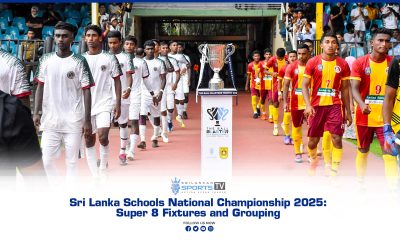
 Football11 months ago
Football11 months agoSri Lanka Schools National Championship 2025: Super 8 Fixtures and Grouping
-

 News11 months ago
News11 months ago2025 Schools Rugby Season Set to Thrill Fans with Knockout and League Action
-
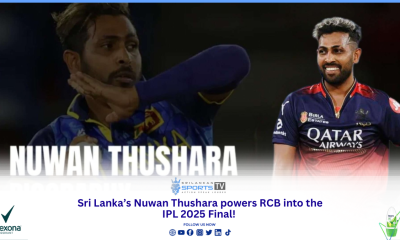
 Cricket7 months ago
Cricket7 months agoNuwan Thushara Shines as RCB Storms into IPL 2025 Final
-

 Live4 years ago
Live4 years agoLive Broadcast of Syria vs Sri Lanka | AFC U23 Asian Championship Qualification
-
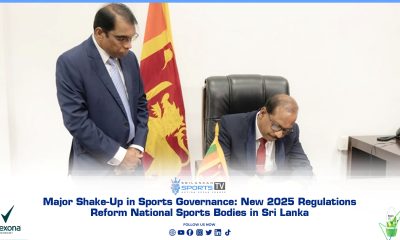
 News7 months ago
News7 months agoMajor Shake-Up in Sports Governance: New 2025 Regulations Reform National Sports Bodies in Sri Lanka
-
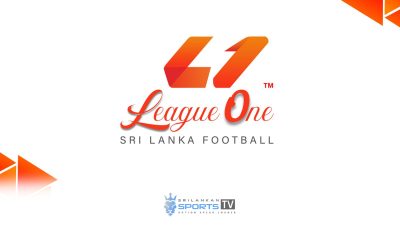
 Football12 months ago
Football12 months agoFFSL Rebrands Division-1 as ‘League-One’ with a Bold New Vision
-
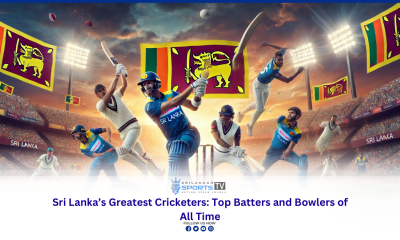
 Cricket11 months ago
Cricket11 months agoSri Lanka’s Greatest Cricketers: Top Batters and Bowlers of All Time
-
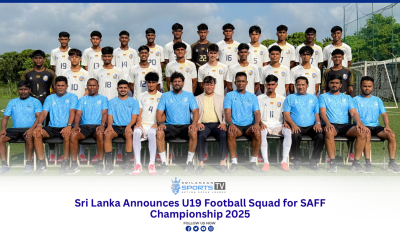
 Football8 months ago
Football8 months agoSri Lanka Announces U19 Football Squad for SAFF Championship 2025

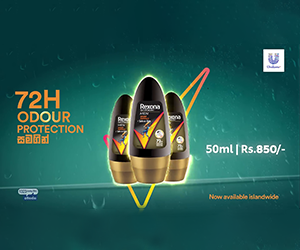






You must be logged in to post a comment Login